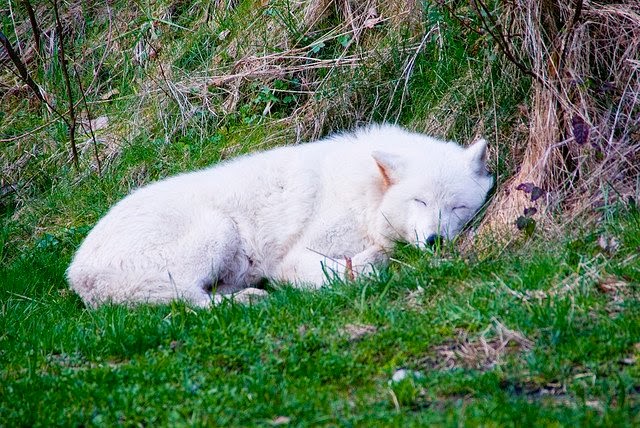Lone wolf plays with dogs.
A wildlife photographer has spent six years chronicling the annual escapades of a lone wolf in Alaska.
Each winter Romeo the black wolf descends from the hills of Alaska's Tongass National Forest to play with domesticated dogs on their winter walks.
For the past six years, wildlife photographer John Hyde has been following the friendly animal. And gaining the huge wolf's trust has allowed him to take these intimate photos.
"I have been following Romeo ever since I heard there was a lone wolf patrolling the surrounding area," revealed the 56-year-old from Juneau, Alaska. "Stories of his arrival in the area began in 2003 when a pregnant female wolf was found dead about one-quarter mile from a nearby glacier visitor's centre.
"Six months later, Romeo's first howl could be heard, and then first regular sightings of Romeo occurred."
Determined to find the lone wanderer, John set about studying his movements in 2004 in a bid to photograph the animal.
"Wolves are common throughout Alaska, but the opportunity to develop the trust of one and to spend extended time with the same animal is something that doesn't happen often," he said. "In fact I have never heard of anything like it before.
"Wolves are seen rarely because they avoid humans. "Initially I came across its track, after which I spent many hours exploring the area and learning as much as I could about him.
"After a while I could find him often enough to make decent photos."
The Tongass National Forest is the largest unit in the national forest system, almost 17 million acres and is home to brown bears, bald eagles, Sitka black-tail deer, porcupines and wolves.
Source
Each winter Romeo the black wolf descends from the hills of Alaska's Tongass National Forest to play with domesticated dogs on their winter walks.
For the past six years, wildlife photographer John Hyde has been following the friendly animal. And gaining the huge wolf's trust has allowed him to take these intimate photos.
"I have been following Romeo ever since I heard there was a lone wolf patrolling the surrounding area," revealed the 56-year-old from Juneau, Alaska. "Stories of his arrival in the area began in 2003 when a pregnant female wolf was found dead about one-quarter mile from a nearby glacier visitor's centre.
"Six months later, Romeo's first howl could be heard, and then first regular sightings of Romeo occurred."
Determined to find the lone wanderer, John set about studying his movements in 2004 in a bid to photograph the animal.
"Wolves are common throughout Alaska, but the opportunity to develop the trust of one and to spend extended time with the same animal is something that doesn't happen often," he said. "In fact I have never heard of anything like it before.
"Wolves are seen rarely because they avoid humans. "Initially I came across its track, after which I spent many hours exploring the area and learning as much as I could about him.
"After a while I could find him often enough to make decent photos."
The Tongass National Forest is the largest unit in the national forest system, almost 17 million acres and is home to brown bears, bald eagles, Sitka black-tail deer, porcupines and wolves.
Source
VIDEO

































































